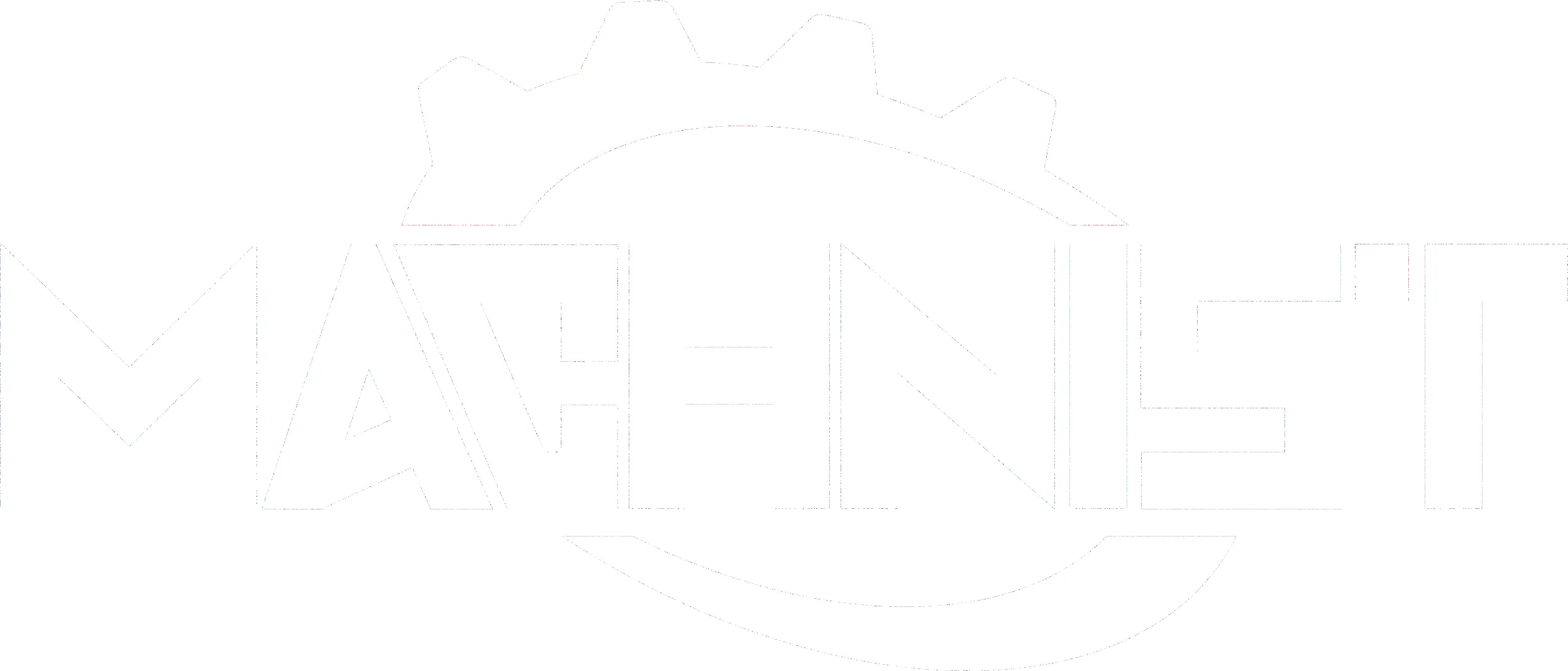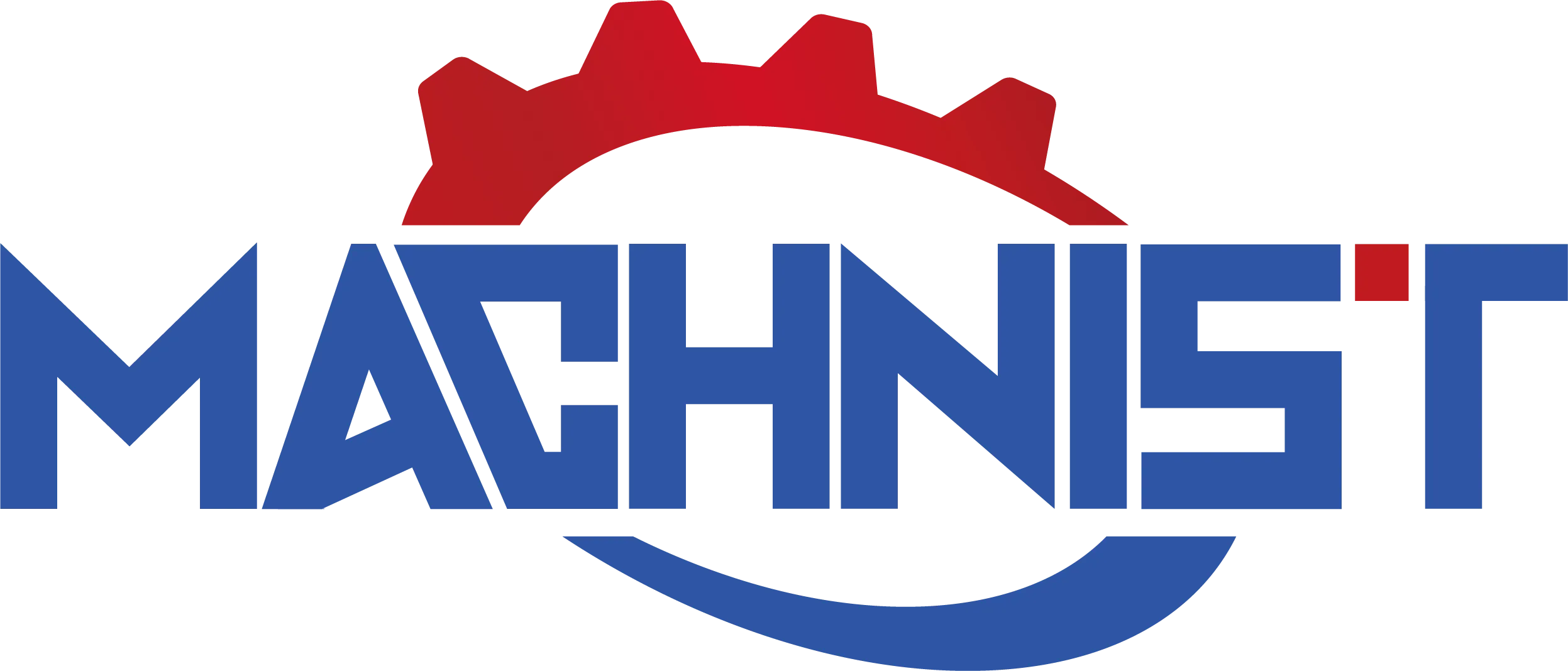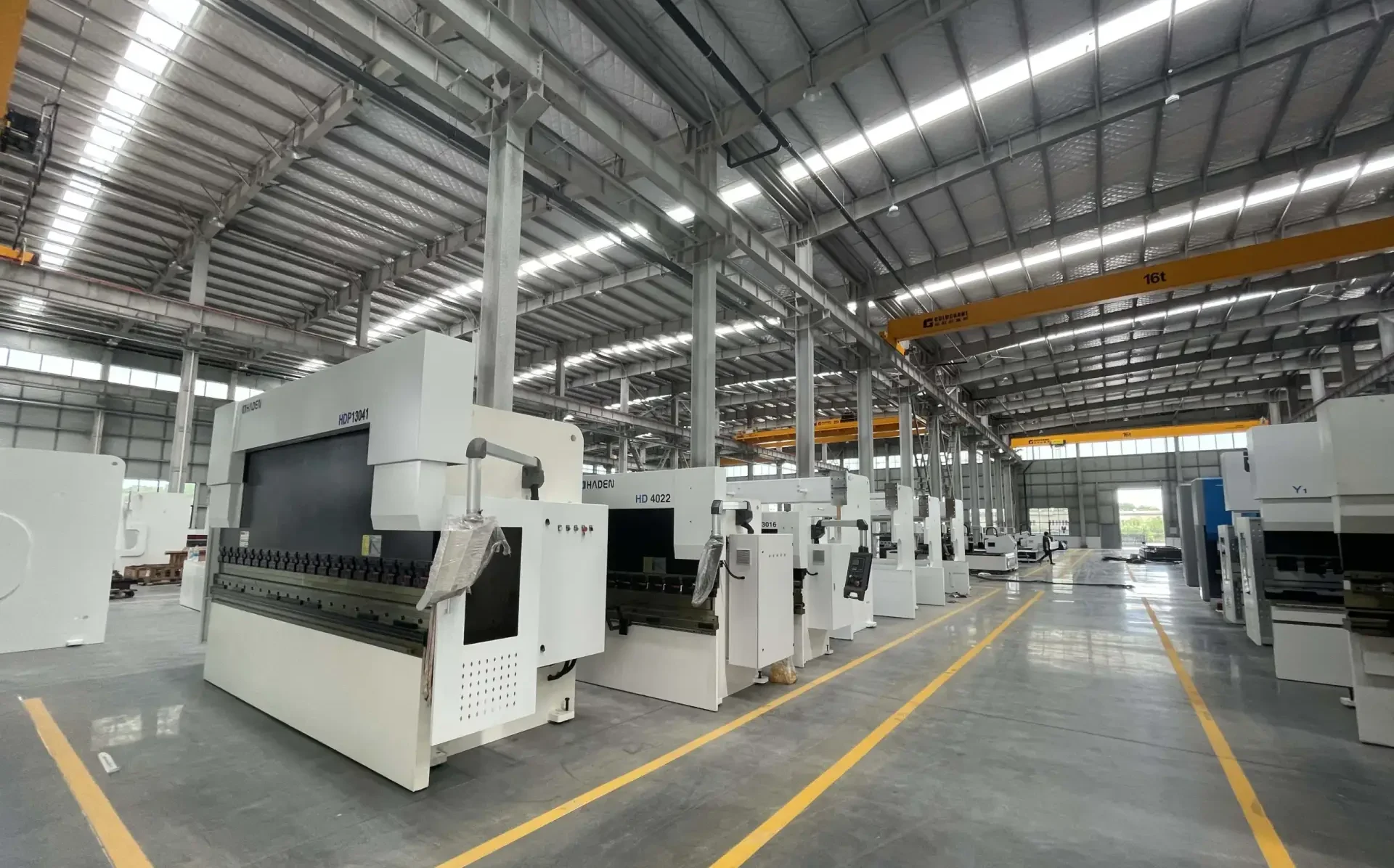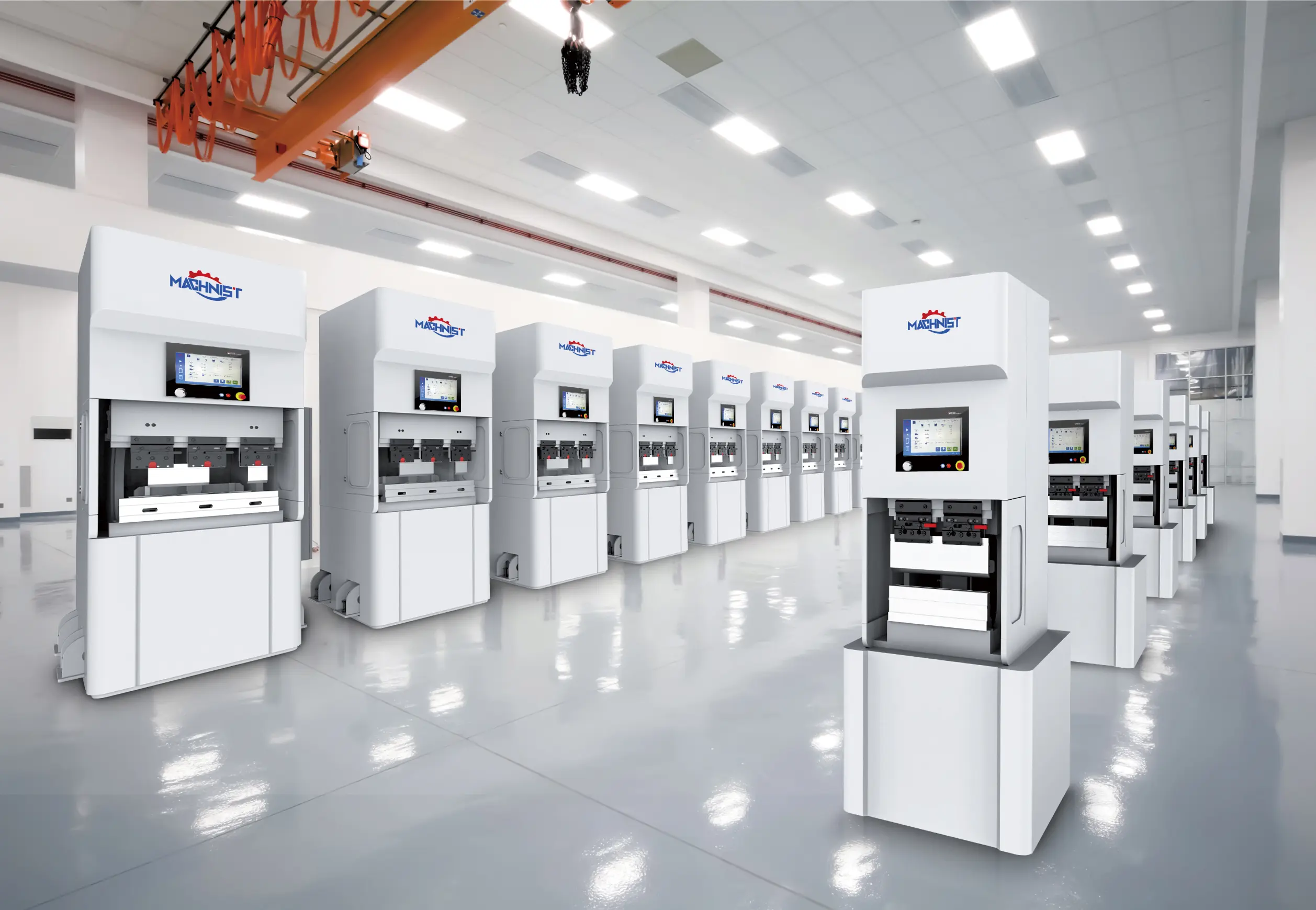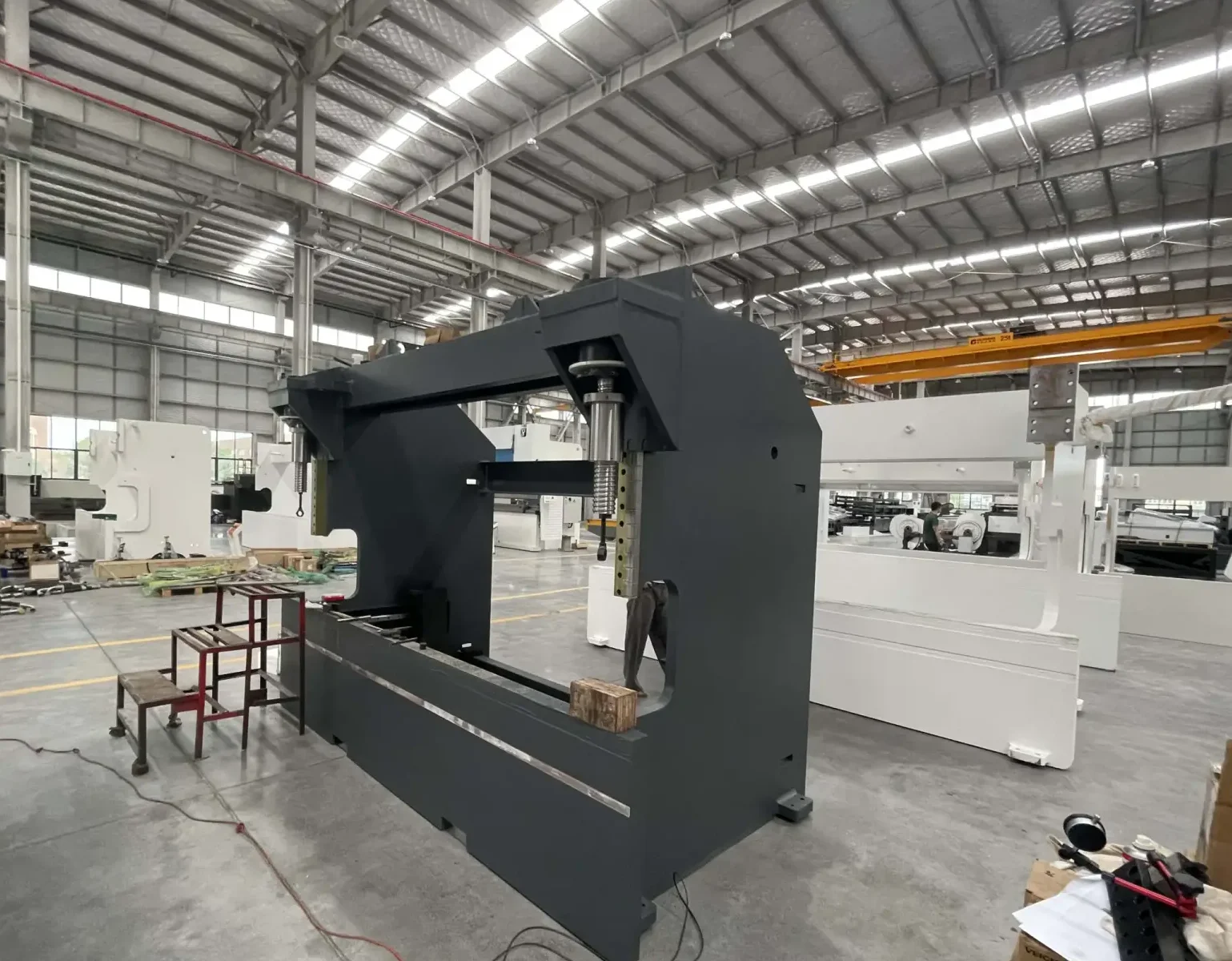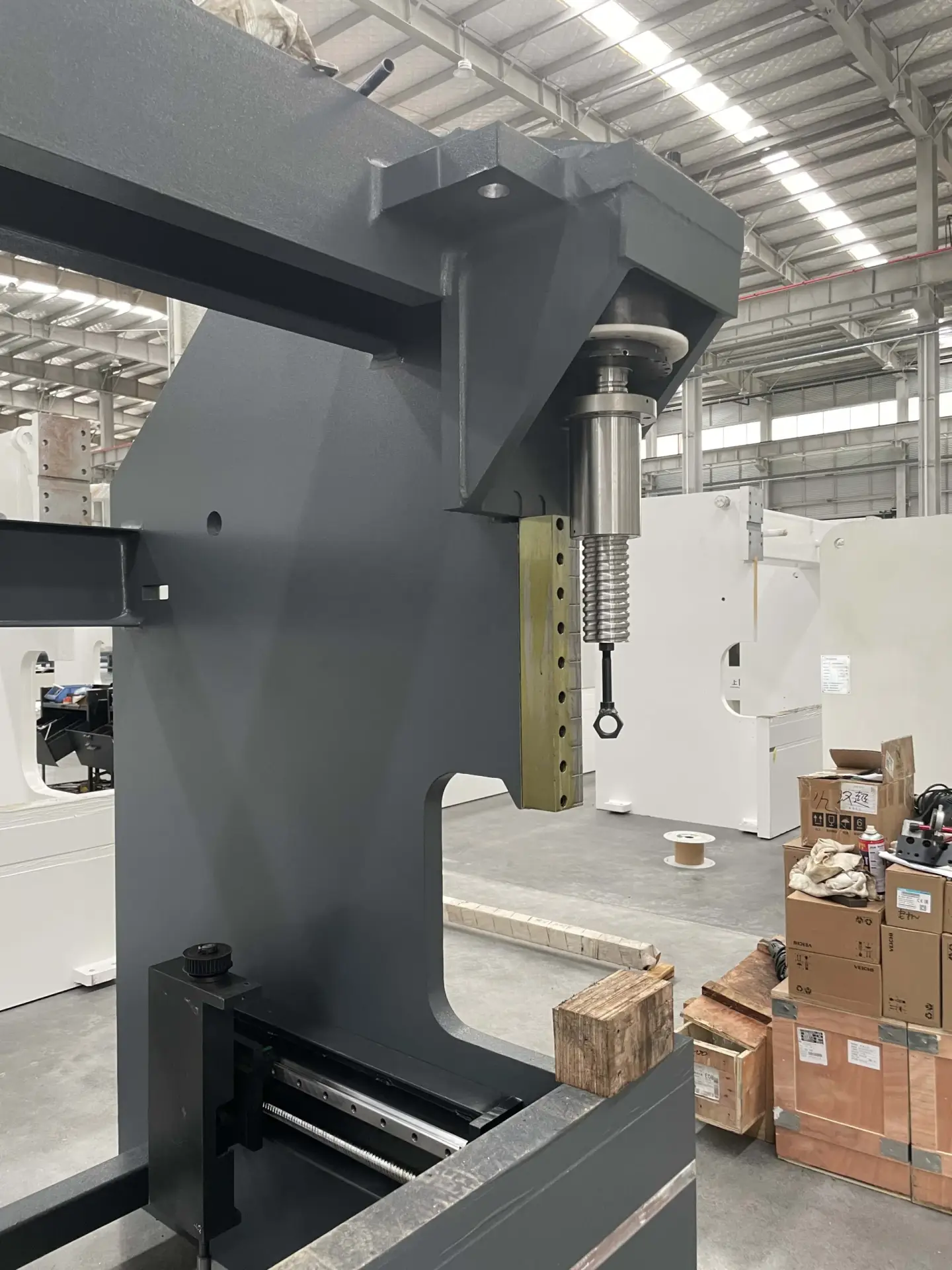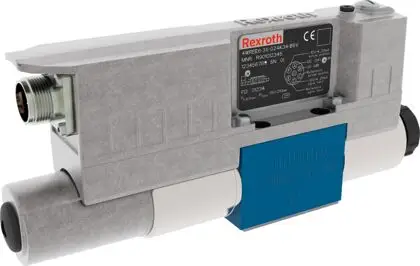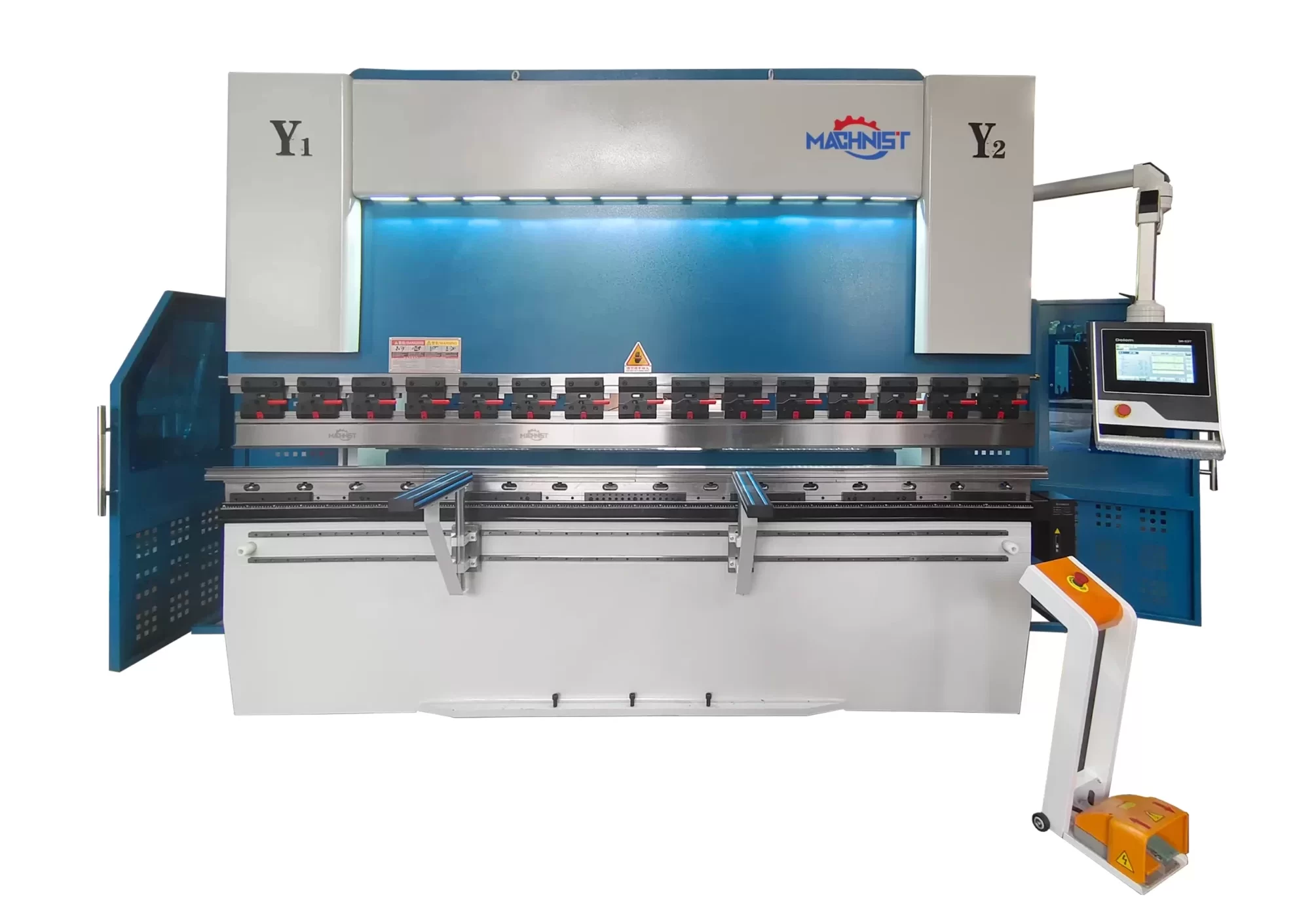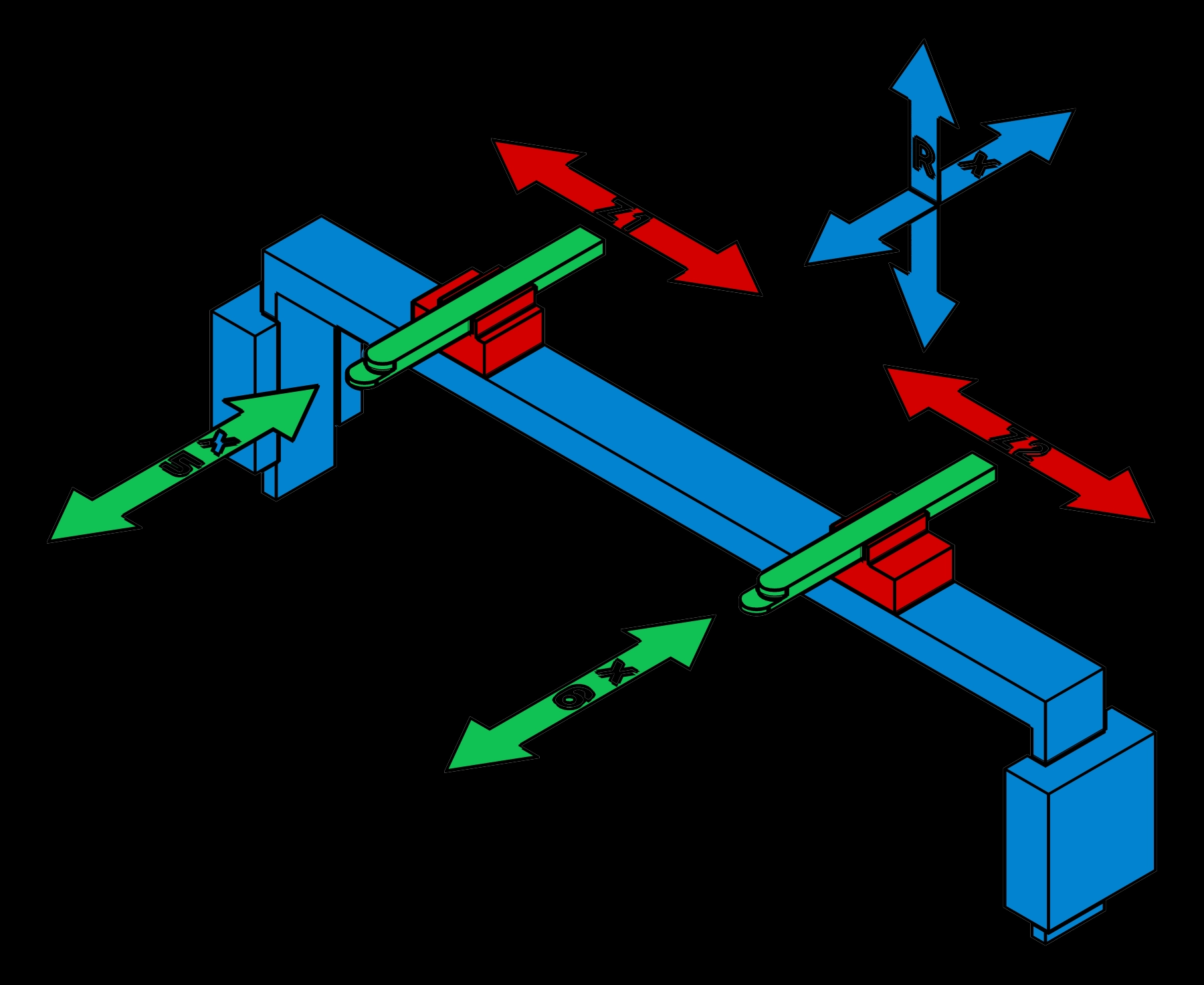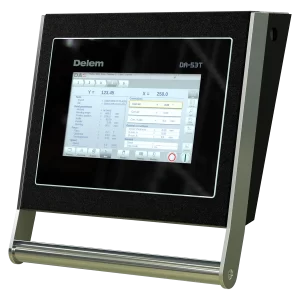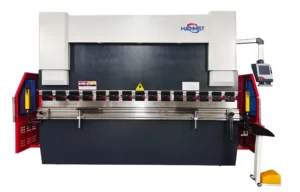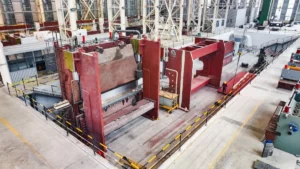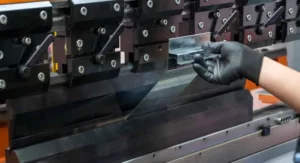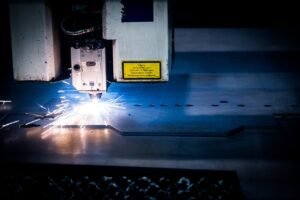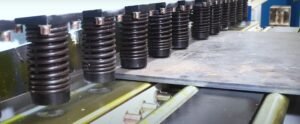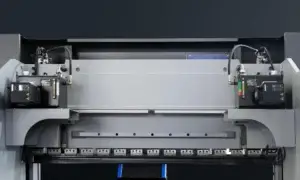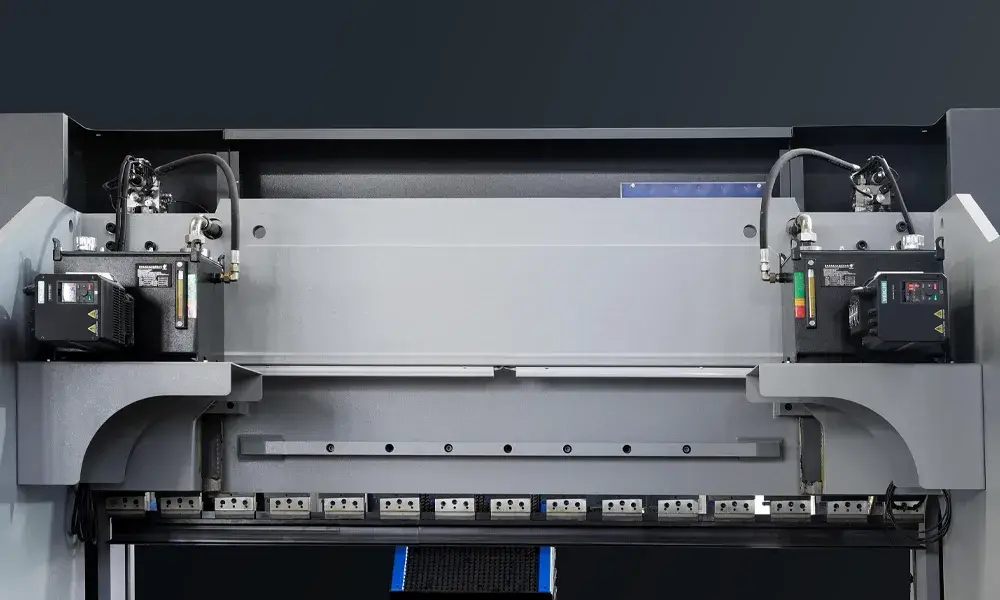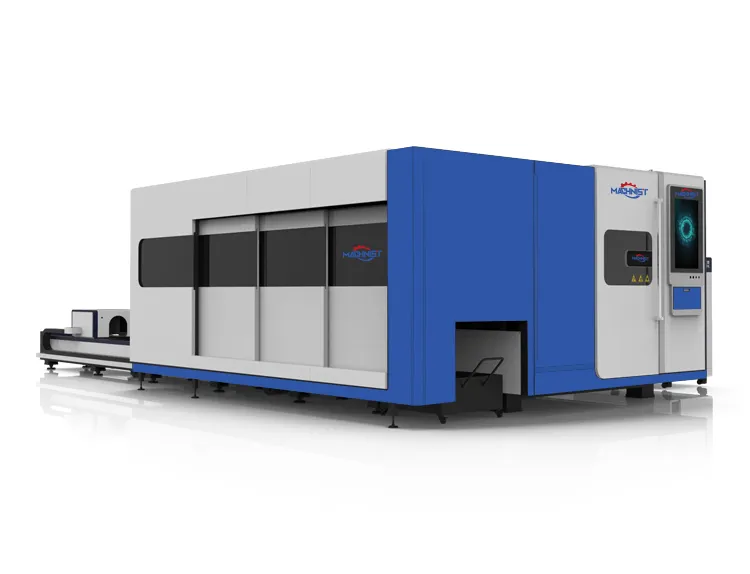Overview
Choosing the right press brake can be a daunting task, especially if you’re new to the industry.
Even after reading countless guides, you might still find yourself confused.
This blog aims to simplify the decision-making process for you, focusing on 4 key aspects: types of brake press, number of control axis, operating systems, and key parameters & capacity .
key 1: parameters & capacity of Press Brakes
First, let us understand the basic parameters of the bending machine.
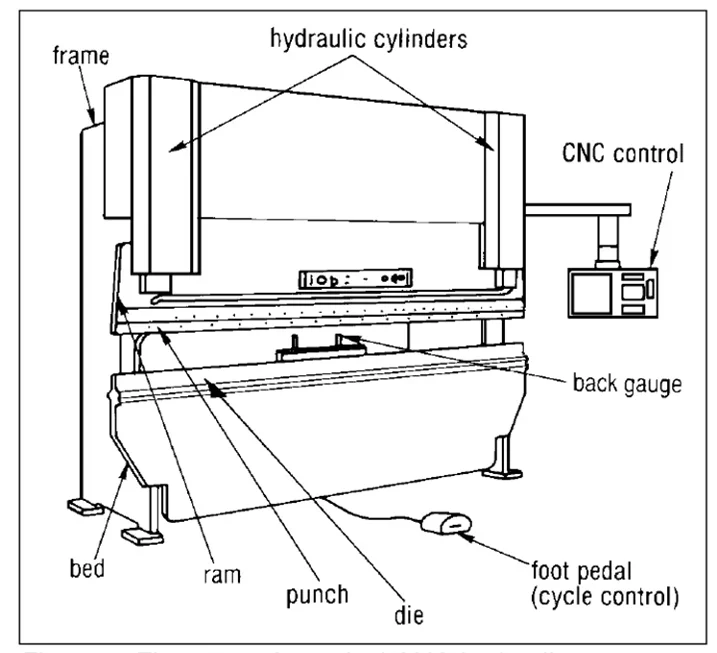
brake press Bending Force
- A simple estimation formula: maximum bending length (meters) x maximum bending thickness (mm) x 8. For stainless steel, multiply by 2.
- Example: For a 3-meter long, 8mm thick MS plate.
- 3x8x8=192, so you need a 200-ton bending machine.
- If we go to stainless steel, we need double time tonage, so you at least need 400T sheet metal break machine.
Frame
- A good bed needs tempering/machine processing to eliminate welding stress, so that when you use the metal bending machine, the deformation will be small and the precision will be higher.
- So we can look at the supplier’s tempering equipment, processing equipment, the fineness of the slider processing, etc.
Throat Depth
- An important parameter greater than the distance between columns. Normal is 400-500mm.
- Consider paying extra for a deeper throat if needed, but balance this against potential deformation risks.
Slider Stroke & Fast speed
- A higher slider stroke facilitates bending boxes and special workpieces. Normally it is between 470-500mm.
- However, the higher it is, the longer it takes to complete a bend.
- Generally, an electro-hydraulic bending machine can bend about 12 times per minute, and the fast speed is at least 200mm/s.
Key 2:Types of Press Brake
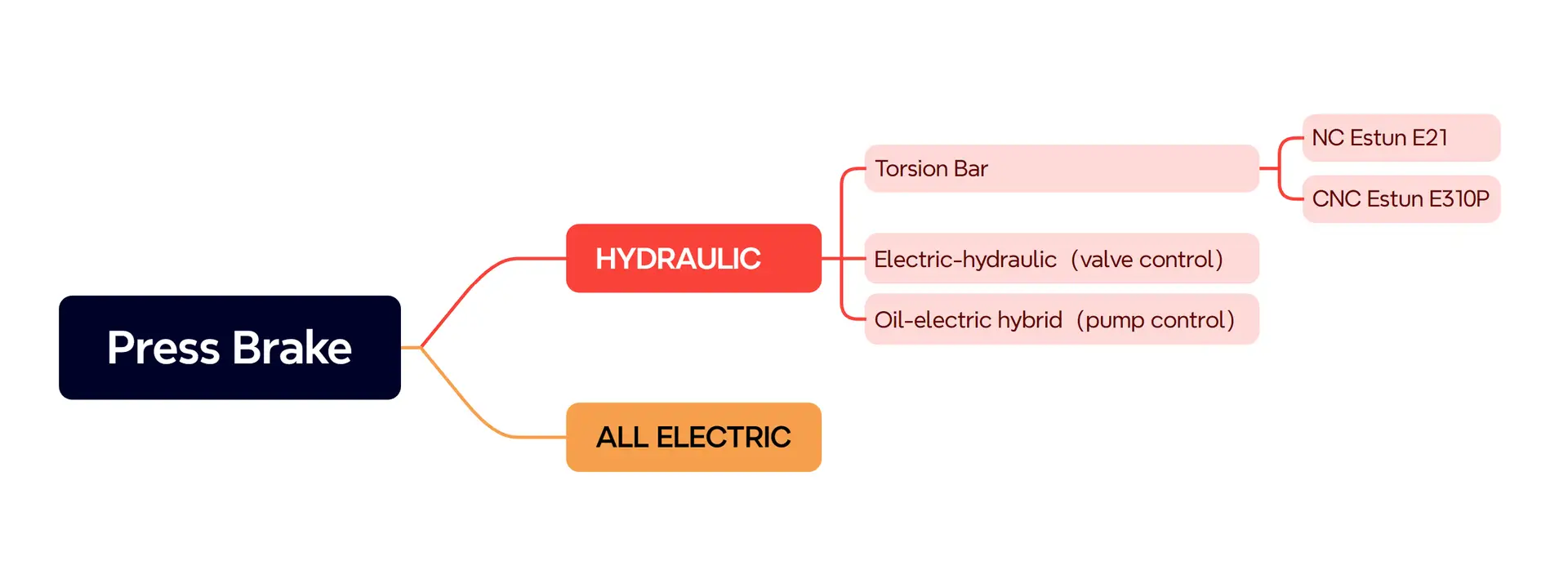
- As the picture shows, I classify bending machines according to the source of pressure:
- All electric servo motor press break, and hydraulic sheet metal machines 2 types.
- Among them, hydraulic bending machine is further divided into torsion bar synchronized hydraulic bending machine, electro-hydraulic synchronized bending machine. and oil electric hydraulic hybrid pump controlled 3 models.
- Each has its own advantages, so which one is right for your business?
All Electric Press Brake: The King of Small & Precision Thin Sheets
Recommendation:
Brainless choice the model under the 63T2500, as long as you’re the one pursuit of precision & efficiency.
Reference Price: 40t1600: $22,000
Principle:
The all electric break press uses 1or 2 servo motor to drive the slider. Paired with a grating ruler, it forms a closed-loop control system. It can be matched with any Delem, esa, cybelec, estun and other mainstream systems.
Advantages:
- No hydraulic oil, Low sound. energy saving and environmental protection.
- Simple structure, low maintenace cost.
- Mechanical transmission efficiency reaches up to 95%, ensuring fast response times.
- Energy consumption is reduced by 75% compared to traditional hydraulic press brakes.
- Higher precision due to the lack of oil temperature influence and servo motor control slider positioning.
Drawbacks: Suitable only for small tonnage and thin sheets.
Buying Tip:
- Since the precision of all electric press brakes is mainly controlled by the ball screw, ensure you verify the brand of the screw. Only globally recognized brands can guarantee long-term accuracy.
- Metal bending machine bed must be temper.
- The servo motor uses a reducer to directly drive the screw, which is more stable than a belt drive.
- Despite the many benefits of all electric press brake, but hydraulic bending machines still dominate the mainstream sheet metal break market with their superb stability and cost-effectiveness.
- If you don’t want to go wrong and save time on research, this is the safest bet.
- Today, I’ll focus on 3 types of hydraulic press break: torsion bar synchronized hydraulic press brakes, electro-hydraulic synchronized press brakes, oil electric hybrid pump controlled brake press , which together cover over 85% of the market.
NC Or CNC?
- First, let’s understand the difference between torsion bar synchronized and electro-hydraulic synchronized break press.
- Many people, including sales representatives and factories, mistakenly classify them simply as NC and CNC.
- Here’s the real deal: Torsion bar has NC and CNC model, depends on it controller, I think as long as there is angle programming function, it is CNC. electro-hydraulic synchronized sheet metal break machines are all cnc.
A trap of cnc electric hydraulic press brake
- CNC has a lot of extensible features, 3D drawing simulation, offline programming, telecommuting, bending with a robotic arm, and so on.
- But there is a basic function, you must pay attention to, that is, hydraulic proportional valve,100% make sure to use a closed-loop control of the hydraulic proportional valve.
- In this way, each time the motor sends a command, the actual position reached, will be fed back to the the system, and real-time correction.
- This is what makes a true CNC bending machine.
- The open-loop or closed-loop proportional valves are different in appearance.
Torsion Bar Synchronized Press Brakes
Recommendation:
- For low budgets and low precision requirements (±0.5mm), and simple products with 3-5 steps, choose a standard torsion bar synchronized NC brake press.
- For higher precision (±0.1mm) or sometimes complex stainless steel products, go for a CNC servo-controlled torsion bar synchronized metal bending machine.
Estimated Price:
- 100t3200 NC Estun E21 Control 2-axis: $13,500
- 100t3200 CNC Estun E300P Control 3+1 axis: $16,800
Principle:
By a torsion bar linkage connected to the left and right two cylinders, two cylinders mechanical synchronization movement.
Between the hydraulic system of the torsion bar machine and the numerical control system, it is open-loop control, the numerical control system according to the limit switch signal control solenoid valve gain or loss of power.
Machine speed is mainly regulated by the throttle valve.
Advantages: Low cost, simple, and durable.
Drawbacks:
- The bending must be in the center of the slider, otherwise the angle of the two sides will be easily affected.
- NC model- Harder to operate, the angle is not well adjusted. Worker operating experience is required.Manual calculation of slider stroke for desired bending angles is required
- Speed and accuracy of torsion bar CNC model, not as high as electro-hydraulic CNC bending machines.
Buying Tip: Ensure the hydraulic system is from an internationally recognized brand like Rexroth to avoid costly replacements later.
- Recommendation: For those seeking high-quality press brakes, this is the go-to choice. Thanks to its working principle, it is inherently more durable, precise, and faster than torsion bar synchronized press brakes.
- Estimated Price:
- 100t3200 Delem DA53t/CybTouch 12P: $23,500
- Principle:
- The electro-hydraulic press brake uses proportional valves on both sides to independently control the Y1 and Y2 cylinders, ensuring synchronous movement and closed-loop control.
- Advantages:
- Fast and adjustable speed, real-time slider data feedback, high precision (±0.01mm), and supports extensive control options and remote operations.
- Buying Tip:
- When inspecting the machine, be sure to check that the accuracy is up to standard.(±0.01-0.03mm)
- Faster response time, suitable for pairing with robots and working for long hours.
- Less affected by oil temperature because of two independent oil pump.
- We describe this model in detail in another article.
Bottom-Driven Press Brakes
Originated from Japan’s Amada press brake, they are fast but have limited applications and more cumbersome operations.
KEY 3:Control Axis of Press Brakes
- Understanding the control axes is crucial, you maybe heard of Y1, Y2, X1, X2, Z1, Z2, R1, R2, +V (worktable crowning), and even W1, W2 (front material support) do.
- Here, I’ll introduce what these axes correspond to, their uses.
Basic Control Axis: Y -Slider Control
- Torsion bar models usually have one Y axis due to the forced synchronization.
- Electro-hydraulic models have independent Y1 and Y2 axes for better precision.
Worktable Crowning Axis:

- Necessary for correcting long-term deformation caused by cylinder pressure on the slider.
- Particularly important for models over 3200mm or industries requiring high precision.
- Note that there is only one popular type of mechanical compensation workbench on the market.
- However, there are workbenches with multi-point compensation and overall compensation.
- Note that it is better to buy the overall compensation in the picture.
- I will elaborate on it in another article.
- Because this overall compensation can make more precise compensation when folding complex workpieces, such as arc bending.
Back Gauge Control Axis
- 1-Axis (X):Basic forward-backward movement for bending length positioning.
- 2-Axis (X, R):Adds up-down movement, improving efficiency and reducing mold collisions.
- 4-Axis (X, R, Z1, Z2):Adds left-right movement, adapting to different lengths and improving efficiency.
- 6-Axis (X1, X2, R1, R2, Z1, Z2):Independent movement of two backstops, suitable for complex shapes and high-volume production.
Front/back Support: Sheet Follower
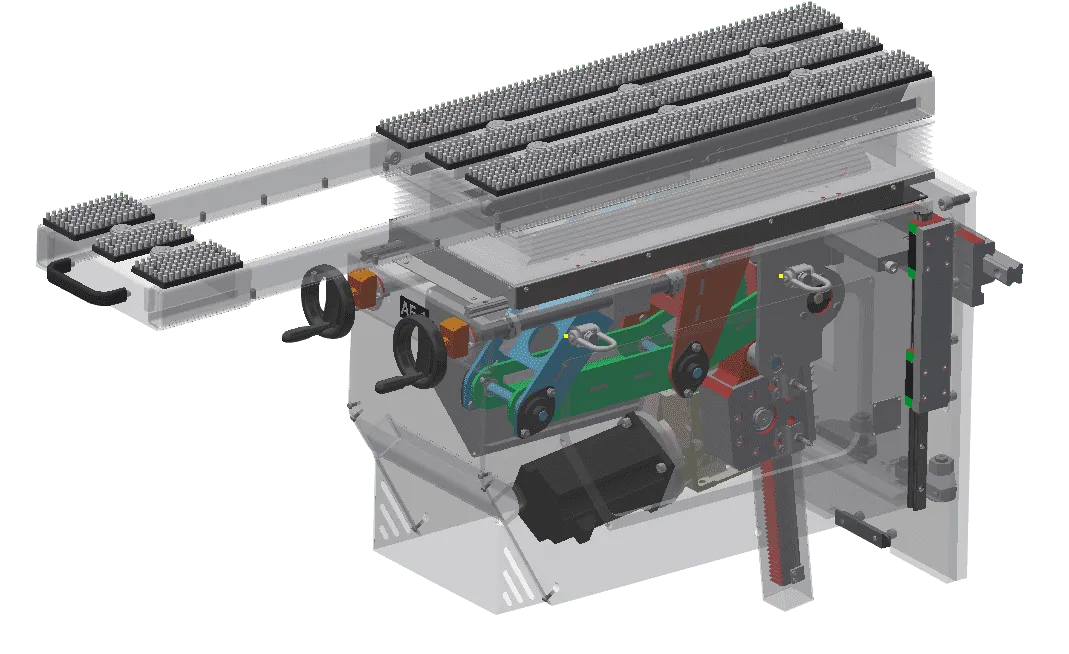
- When some large plates, manual bending is not convenient, you can use the follower bending.
- When the bending machine size of some workpieces is very large, the backstop also needs to follow the bending.
Key 4:Controller/Operating System of bending machine
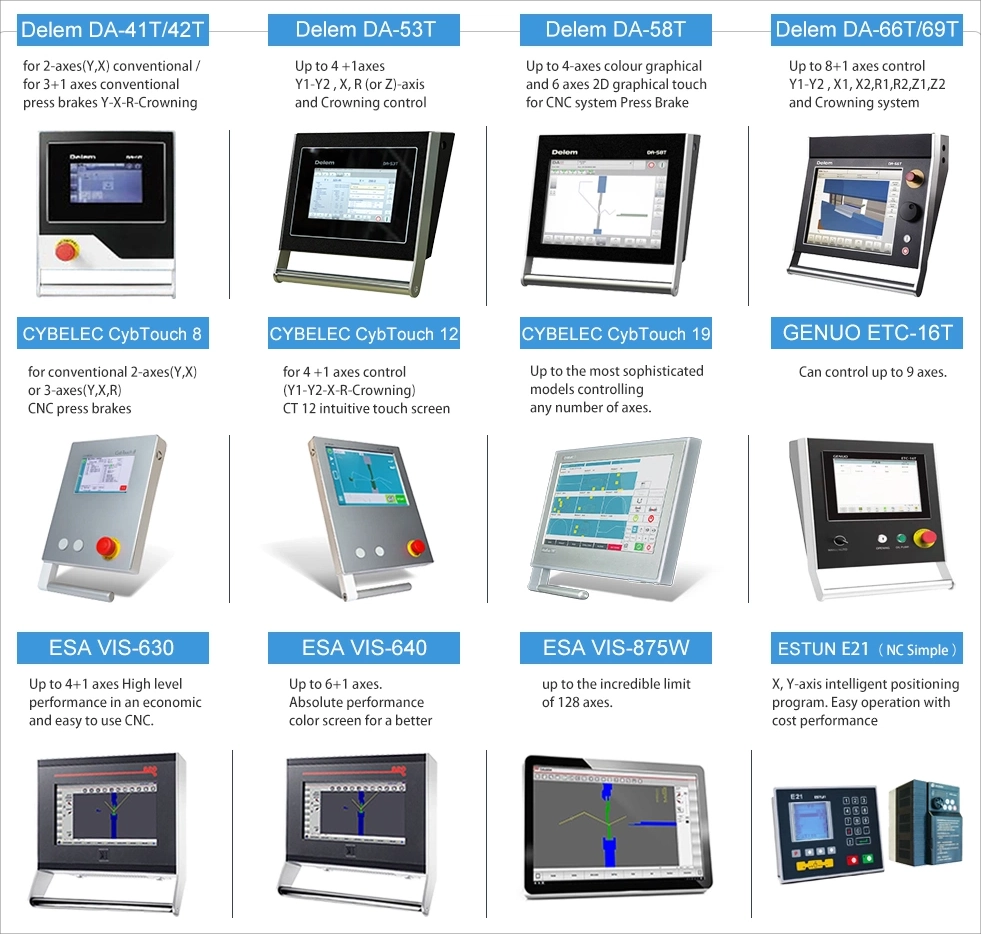
The above well-known systems are all good, the following are my personal recommendations.
Features of the Estun E21 Control System:
- Estun E21:The most classic press brake system, simple and durable.
- Positioning Control: Manages the back gauge positioning.
- Intelligent Positioning: Ensures accurate and efficient operations.
- Unilateral and Bidirectional Positioning: Effectively eliminates spindle clearance.
- Retract Functions: Provides added functionality for various operations.
- Automatic Reference Searching: Simplifies setup and improves accuracy.
- One-Key Parameter Backup and Restore: Facilitates easy system management.
- Fast Position Indexing: Speeds up the positioning process.
- Program Storage: Can store up to 40 programs, each with 25 steps.
- Power-Off Protection: Safeguards data in case of power interruptions.
For detailed instructions, please refer to the operating manual.
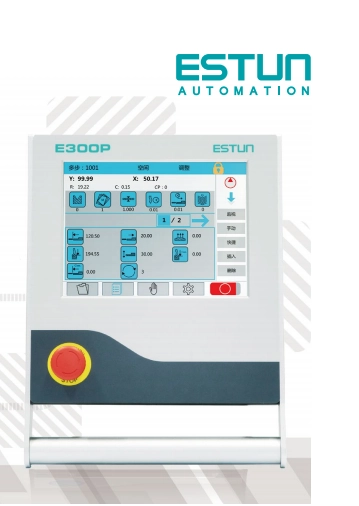
- E300P:Supports 4 axis, offering high accuracy and efficiency.
- Axes Supported: X-axis, Y-axis, R-axis, and C-axis.
- Automatic Block Position Calculation: Adjusts according to bending angle, material, thickness, and mold parameters.
- High-Accuracy Back Gauge Control: Managed by servo systems for X-axis and R-axis.
- Optional Control for C-axis: Can be hydraulic or mechanical.
- Programming: Supports programming in absolute value or angle.
- Parameter Management: Backup, restore, import, and export parameters easily for machine commissioning.
- Program Editing: Single-page program editing for improved efficiency.
- Dwell Time and Retracting Delay: Programmable by the device, replacing the need for a time relay.
- Die Interference Avoidance: Prevents collision of the die.
- Adjustable Opening Distance: Enhances operating efficiency.
- Automatic Clamping Point Adjustment: Improves setup times.
- Real-Time Monitoring: View inputs, outputs, valves, and faults on the Monitor page.
- R-axis Zero Position Adjustment: Automatically adjusts for accuracy.
- Programmable Materials and Die Information: Facilitates easy management.
- Operation Modes: Jog, Single, and Continuous.
- Language and Unit Settings: Customizable for user preference.
- IO Ports: Freely allocatable and detectable to avoid repetition.
- Positioning: Bilateral and unilateral.
- Slug Clearance Function: Enhances cleanliness and performance.
- Reference Point Teaching/Search: Easy setup for repeat jobs.
- Servo-Controlled Axes: Can be manually moved.
- Real-Time Memory: Parameters, positions, and programs are retained against unexpected power interruptions.
Comparable options include Cybelec Cybtouch8 and Esa630, which are stable and similar in functionality.
The choice of the operating system depends on personal preference, but I personally favor Delem’s interface and style.
Key Features:
- “Hot-key” Touch Navigation: Easy and intuitive navigation.
- 10.1″ High-Resolution Colour TFT: Clear and vivid display.
- Supports Up to 4 Axes: Y1, Y2, plus 2 auxiliary axes.
- Crowning Control: Ensures consistent bending quality.
- Tool/Material/Product Library: Simplifies setup and operation.
- Servo and Frequency Inverter Control: Enhances precision and efficiency.
- Advanced Y-Axis Control Algorithms: Suitable for both closed-loop and open-loop valves.
- TandemLink (Optional): For tandem machine operations.
- USB Memory Stick Interfacing: Easy data transfer and backup.
- Profile-T Offline Software: Enables offline programming and simulation.
The Delem DA66t is highly cost-effective, approximately $8000 more than the DA53t, offering high-end press brake control solutions.
This upgrade includes Delem’s successful 3D simulation functionality, with optional offline programming features available for an additional cost.
Key Features:
- 2D Graphical Touch Screen Programming Mode: Simplifies the programming process.
- 17″ High-Resolution Colour TFT: Large, clear display for better visibility.
- Full Windows Application Suite: Offers a versatile and familiar operating environment.
- Delem Modusys Compatibility: Allows for module scalability and adaptivity.
- USB and Peripheral Interfacing: Facilitates easy connection to external devices.
- User-Specific Application Support: Within the control’s multitasking environment.
- Sensor Bending & Correction Interface: Improves accuracy and consistency.
- Profile-TL Offline Software: Enables advanced offline programming and simulation.
For further details and operation, please refer to the specific user manuals and guides.
Conclusion:
Here’s a summary from low to high price:
- Small tonnage:Go for all electric press brakes, ensuring the screw quality.
- Cost-saving:Choose NC torsion bar synchronized hydraulic press brakes, preferably with Estun E21 control and a manual compensation worktable for lengths over 3200mm.
- Cost-saving with high-end features:Opt for CNC torsion bar synchronized press brakes with Estun E300P control and servo systems.
- High precision and efficiency:Select CNC electro-hydraulic synchronized press brakes, focusing on the proportional valve quality and closed-loop control system. Recommended system: Delem DA53t with 4+1 axes.
- Top solution:CNC electro-hydraulic synchronized press brakes with Delem DA66T 8+1 axes, ensuring all necessary features are enabled.
With these four key aspects covered—types of press brakes, control axis, operating systems, and crucial parameters—you’re now equipped to make an informed decision.
Go ahead and contact your sales representative, and get the perfect press brake for your needs.
Happy buying!
